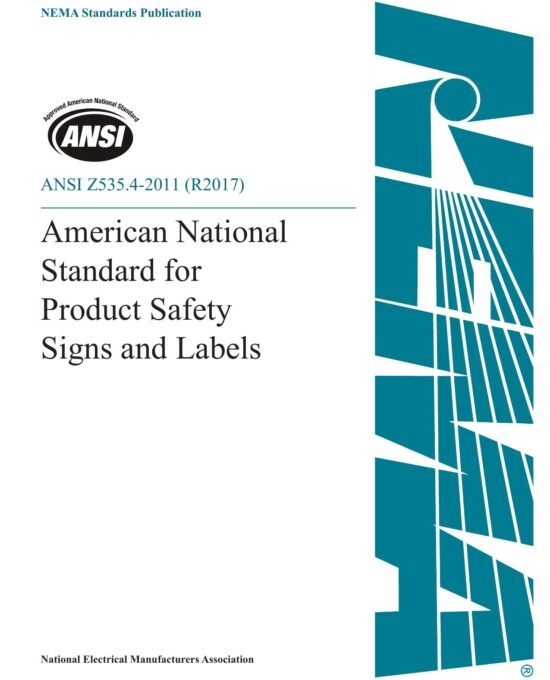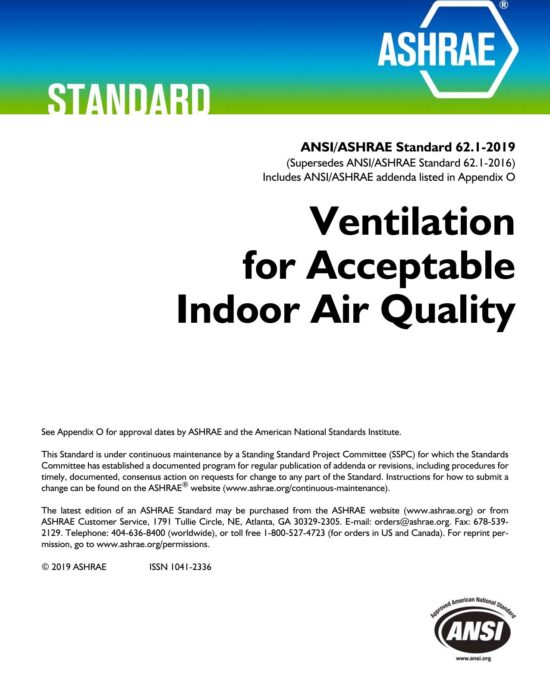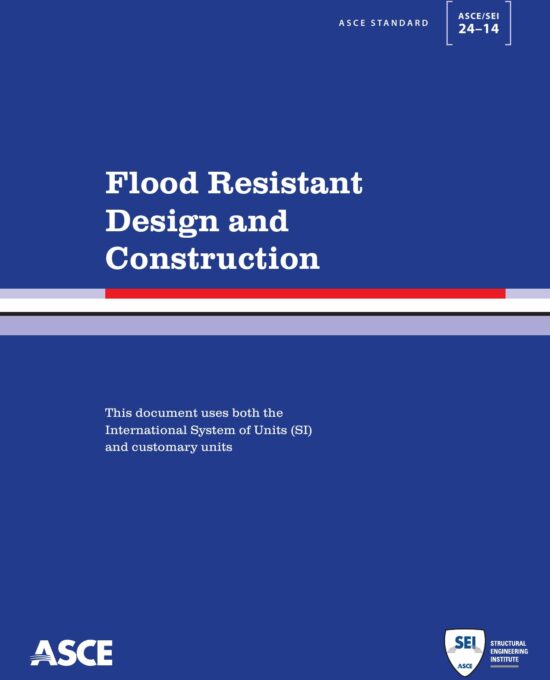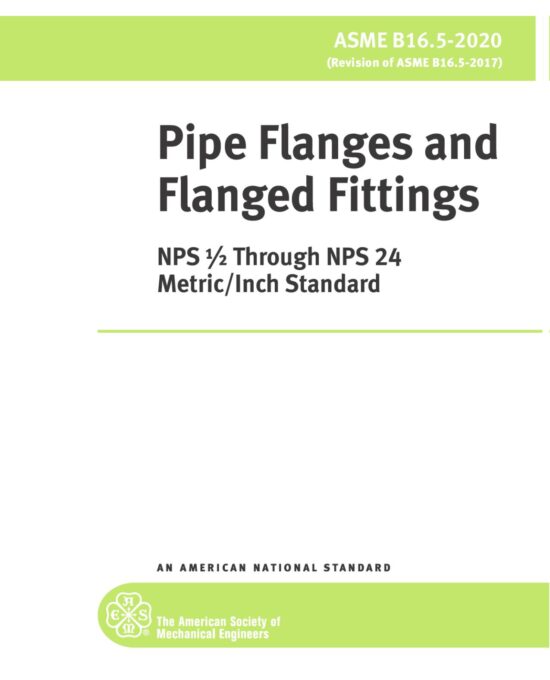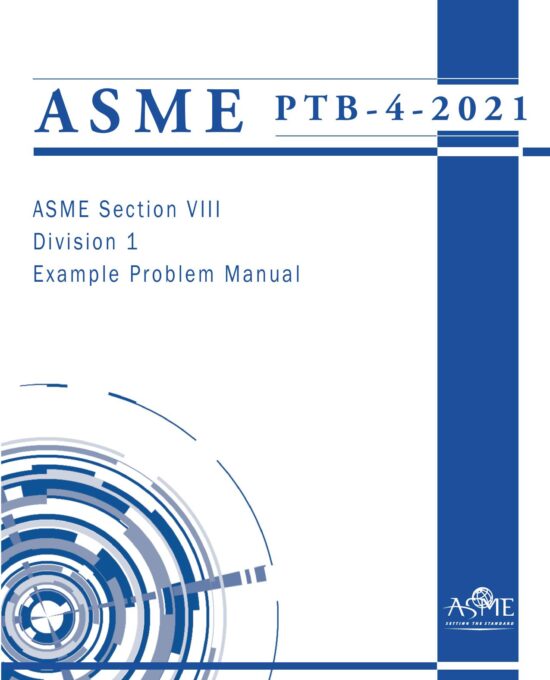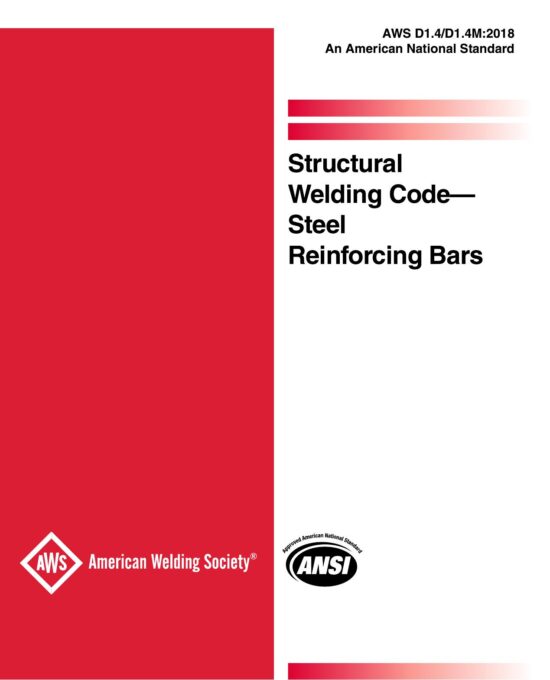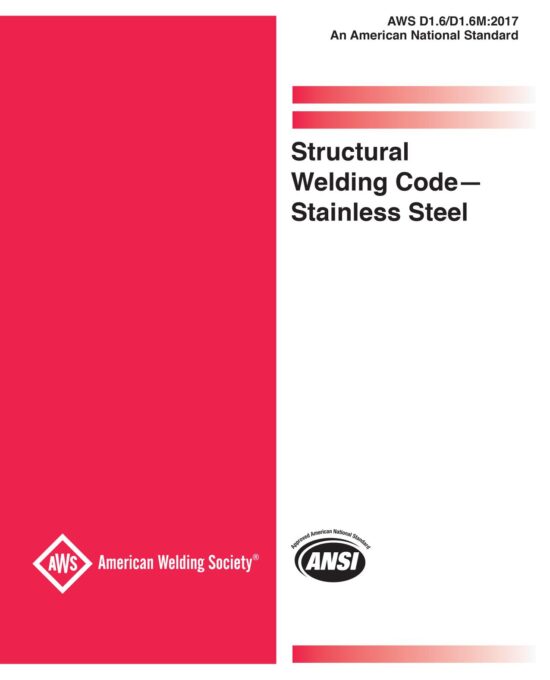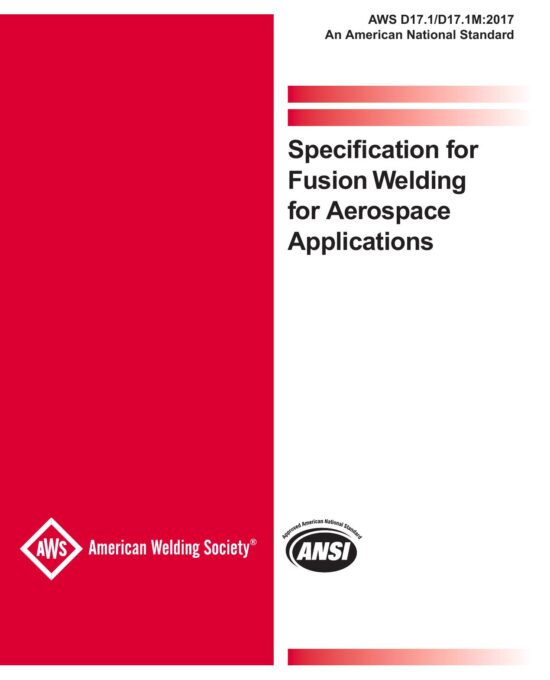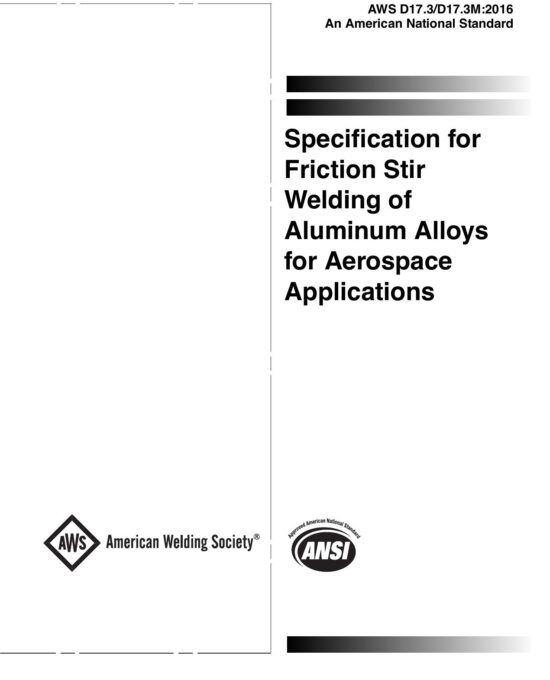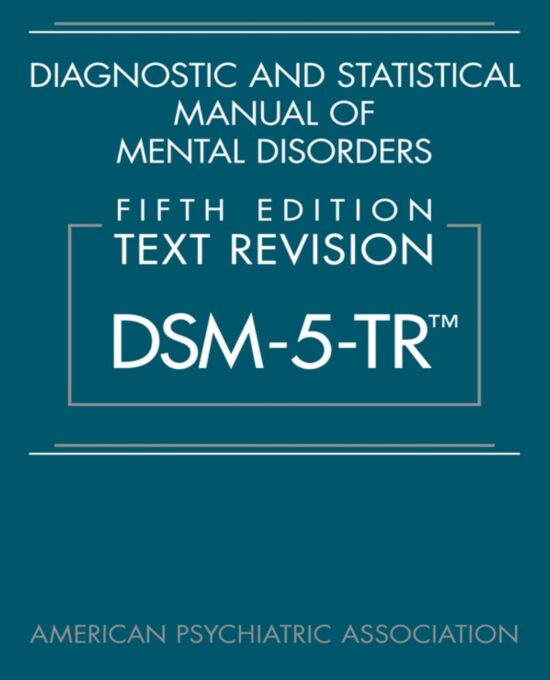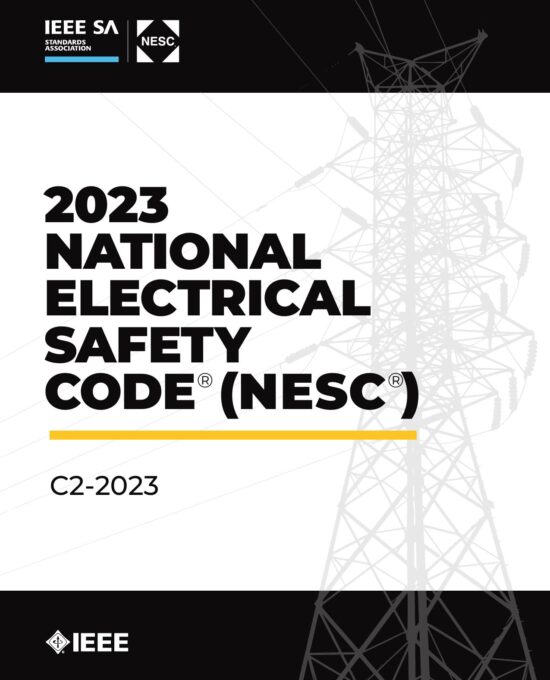A World of Art – 8th Edition by Henry M. Sayre (Pearson, 2015)
A World of Art (8th Edition) by Henry M. Sayre is a bestselling art appreciation textbook that introduces readers to visual culture through a global lens. This full-color edition presents more than 700 artworks across time periods and styles, using accessible language to promote critical thinking and creative exploration.
Highlights:
- Comprehensive survey of global art, past and present
- Over 700 high-quality images, including classical, modern, and contemporary works
- Thematic chapters on identity, spirituality, power, and life cycles
- Visual analysis tools and creative process walkthroughs
- Student-friendly layout with guided questions and definitions
- Ideal for college-level Art Appreciation, Humanities, and Visual Culture courses
- Supports visual literacy, cultural awareness, and analytical skills
Who It’s For:
Students, educators, and institutions seeking a well-structured, engaging resource for introductory art courses. Also suitable for general readers interested in understanding how art reflects and shapes human experience.
A World of Art – 8th Edition by Henry M. Sayre (Pearson, 2015)
A World of Art (8th Edition) by Henry M. Sayre is a bestselling art appreciation textbook that introduces readers to visual culture through a global lens. This full-color edition presents more than 700 artworks across time periods and styles, using accessible language to promote critical thinking and creative exploration.
Highlights:
- Comprehensive survey of global art, past and present
- Over 700 high-quality images, including classical, modern, and contemporary works
- Thematic chapters on identity, spirituality, power, and life cycles
- Visual analysis tools and creative process walkthroughs
- Student-friendly layout with guided questions and definitions
- Ideal for college-level Art Appreciation, Humanities, and Visual Culture courses
- Supports visual literacy, cultural awareness, and analytical skills
Who It’s For:
Students, educators, and institutions seeking a well-structured, engaging resource for introductory art courses. Also suitable for general readers interested in understanding how art reflects and shapes human experience.
AASHTO GL-7: Roadway Lighting Design Guide, 7th Edition (2018)
AASHTO GL-7: Roadway Lighting Design Guide, Seventh Edition (2018) provides comprehensive guidance on the planning, design, and implementation of roadway lighting systems. This edition reflects current engineering practices, safety standards, and lighting technologies to enhance visibility, energy efficiency, and operational reliability across modern transportation networks.
Highlights:
- Design principles covering illuminance, luminance, uniformity, and glare control
- Guidance on developing master roadway lighting plans and policies
- Recommended lighting levels for highways, streets, intersections, and pedestrian zones
- Design criteria for tunnels, underpasses, and bridges
- Considerations for temporary lighting in work zones and construction areas
- Evaluation of emerging technologies such as adaptive lighting and smart controls
- Discussion on lighting management systems and energy-efficient solutions
- Environmental impact assessments and aesthetic integration strategies
- Standards for pole placement, maintenance access, and safety
- Support for decision-making with traffic data and community planning considerations
Who It’s For:
An essential reference for transportation agencies, civil engineers, and planners responsible for roadway lighting design and policy development.
GL-7-2018
AASHTO GL-7: Roadway Lighting Design Guide, 7th Edition (2018)
AASHTO GL-7: Roadway Lighting Design Guide, Seventh Edition (2018) provides comprehensive guidance on the planning, design, and implementation of roadway lighting systems. This edition reflects current engineering practices, safety standards, and lighting technologies to enhance visibility, energy efficiency, and operational reliability across modern transportation networks.
Highlights:
- Design principles covering illuminance, luminance, uniformity, and glare control
- Guidance on developing master roadway lighting plans and policies
- Recommended lighting levels for highways, streets, intersections, and pedestrian zones
- Design criteria for tunnels, underpasses, and bridges
- Considerations for temporary lighting in work zones and construction areas
- Evaluation of emerging technologies such as adaptive lighting and smart controls
- Discussion on lighting management systems and energy-efficient solutions
- Environmental impact assessments and aesthetic integration strategies
- Standards for pole placement, maintenance access, and safety
- Support for decision-making with traffic data and community planning considerations
Who It’s For:
An essential reference for transportation agencies, civil engineers, and planners responsible for roadway lighting design and policy development.
GL-7-2018
AASHTO HB-17: Standard Specifications for Highway Bridges, 17th Edition (2002)
AASHTO HB-17: Standard Specifications for Highway Bridges, 17th Edition (2002) provides comprehensive criteria for the design, construction, and maintenance of highway bridges throughout the United States. This edition is the final update prior to the nationwide adoption of Load and Resistance Factor Design (LRFD) standards.
Highlights:
- General provisions for bridge design, structural analysis, and performance
- Criteria for superstructures, substructures, abutments, culverts, and piers
- Service load and load factor design methods for concrete, steel, timber, and prestressed components
- Requirements for foundations, retaining structures, and soil-structure interaction
- Specifications addressing load distribution, fatigue, seismic considerations, and strength evaluation
- Commentary and notes incorporating interim revisions through 2003
- References to supporting standards from AASHTO, ASTM, AWS, and others
- Applicable to rehabilitation, legacy design validation, and maintenance planning for non-LRFD bridges
Who It’s For:
A critical reference for bridge engineers, transportation officials, and contractors working with legacy structures or evaluating designs developed before the transition to LRFD.
HB-17-2002
AASHTO HB-17: Standard Specifications for Highway Bridges, 17th Edition (2002)
AASHTO HB-17: Standard Specifications for Highway Bridges, 17th Edition (2002) provides comprehensive criteria for the design, construction, and maintenance of highway bridges throughout the United States. This edition is the final update prior to the nationwide adoption of Load and Resistance Factor Design (LRFD) standards.
Highlights:
- General provisions for bridge design, structural analysis, and performance
- Criteria for superstructures, substructures, abutments, culverts, and piers
- Service load and load factor design methods for concrete, steel, timber, and prestressed components
- Requirements for foundations, retaining structures, and soil-structure interaction
- Specifications addressing load distribution, fatigue, seismic considerations, and strength evaluation
- Commentary and notes incorporating interim revisions through 2003
- References to supporting standards from AASHTO, ASTM, AWS, and others
- Applicable to rehabilitation, legacy design validation, and maintenance planning for non-LRFD bridges
Who It’s For:
A critical reference for bridge engineers, transportation officials, and contractors working with legacy structures or evaluating designs developed before the transition to LRFD.
HB-17-2002
ANSI Z535.4-2011 (R2017): Product Safety Signs and Labels
ANSI Z535.4-2011 (R2017): Product Safety Signs and Labels provides standardized guidance for the design and application of product safety signs and labels. This reaffirmed edition helps manufacturers effectively communicate hazard information to reduce risk and improve safety across a wide range of industrial and consumer products.
Highlights:
- Defines use of standardized signal words: DANGER, WARNING, CAUTION, and NOTICE
- Establishes hazard classification systems and formatting conventions
- Specifies layout, safety colors, symbols, and typography for clear communication
- Offers guidance on incorporating safety symbols for universal understanding
- Sets durability requirements for labels exposed to harsh environments
- Recommends best practices for label placement and visibility
Who It’s For:
A vital reference for engineers, product designers, compliance managers, and safety professionals responsible for labeling products in accordance with ANSI safety communication standards.
ANSI-Z535.4-2011-R2017
ANSI Z535.4-2011 (R2017): Product Safety Signs and Labels
ANSI Z535.4-2011 (R2017): Product Safety Signs and Labels provides standardized guidance for the design and application of product safety signs and labels. This reaffirmed edition helps manufacturers effectively communicate hazard information to reduce risk and improve safety across a wide range of industrial and consumer products.
Highlights:
- Defines use of standardized signal words: DANGER, WARNING, CAUTION, and NOTICE
- Establishes hazard classification systems and formatting conventions
- Specifies layout, safety colors, symbols, and typography for clear communication
- Offers guidance on incorporating safety symbols for universal understanding
- Sets durability requirements for labels exposed to harsh environments
- Recommends best practices for label placement and visibility
Who It’s For:
A vital reference for engineers, product designers, compliance managers, and safety professionals responsible for labeling products in accordance with ANSI safety communication standards.
ANSI-Z535.4-2011-R2017
ANSI/ASHRAE 62.1-2019: Ventilation for Acceptable Indoor Air Quality
ANSI/ASHRAE Standard 62.1-2019: Ventilation for Acceptable Indoor Air Quality establishes minimum requirements for ventilation system design, installation, and maintenance in commercial and institutional buildings. This standard is a foundational reference for achieving acceptable indoor air quality (IAQ) and reducing health risks associated with poor ventilation.
Highlights:
- Updated Ventilation Rate Procedure with enhanced zone-level calculation methods
- Revised Natural Ventilation Procedure, including outdoor air quality and mechanical integration
- Prohibits use of ozone-generating air-cleaning devices
- Requires humidity control using dew point rather than relative humidity
- Separates patient care areas now governed under ASHRAE/ASHE Standard 170
- Clarifies definitions for spaces, ventilation zones, and contaminant sources
- Outlines requirements for design documentation, commissioning, and IAQ performance testing
- Includes appendices with ventilation rate rationale, IAQ procedures, and engineering tools
Who It’s For:
A critical reference for mechanical engineers, HVAC designers, facility managers, and code officials involved in ensuring compliant ventilation design and indoor air quality performance.
ASHRAE-62.1-2019
ANSI/ASHRAE 62.1-2019: Ventilation for Acceptable Indoor Air Quality
ANSI/ASHRAE Standard 62.1-2019: Ventilation for Acceptable Indoor Air Quality establishes minimum requirements for ventilation system design, installation, and maintenance in commercial and institutional buildings. This standard is a foundational reference for achieving acceptable indoor air quality (IAQ) and reducing health risks associated with poor ventilation.
Highlights:
- Updated Ventilation Rate Procedure with enhanced zone-level calculation methods
- Revised Natural Ventilation Procedure, including outdoor air quality and mechanical integration
- Prohibits use of ozone-generating air-cleaning devices
- Requires humidity control using dew point rather than relative humidity
- Separates patient care areas now governed under ASHRAE/ASHE Standard 170
- Clarifies definitions for spaces, ventilation zones, and contaminant sources
- Outlines requirements for design documentation, commissioning, and IAQ performance testing
- Includes appendices with ventilation rate rationale, IAQ procedures, and engineering tools
Who It’s For:
A critical reference for mechanical engineers, HVAC designers, facility managers, and code officials involved in ensuring compliant ventilation design and indoor air quality performance.
ASHRAE-62.1-2019
ANSI/ASHRAE 62.1-2022: Ventilation for Acceptable Indoor Air Quality
ANSI/ASHRAE Standard 62.1-2022: Ventilation for Acceptable Indoor Air Quality defines minimum requirements for mechanical and natural ventilation systems in commercial, institutional, and industrial buildings. Widely referenced by model codes such as the International Building Code, this standard is critical for achieving acceptable indoor air quality (IAQ) in non-residential environments.
Highlights:
- Defines procedures for assessing outdoor air quality and ventilation by occupancy type
- Revised Section 5 reorganizes systems/equipment content by airflow path
- Updates IAQ Procedure with design compound guidance and mass-balance modeling
- Establishes separation distances for exhaust air and dew point limits for cooled spaces
- Classifies ventilation zones and defines airflow effectiveness and breathing zone metrics
- Covers design, installation, commissioning, and maintenance of ventilation systems
- Includes appendices for healthcare settings, air quality evaluation, compliance paths, and simplified rate calculations
- Incorporates addenda through Appendix Q as part of its continuous maintenance model
Who It’s For:
Designed for mechanical engineers, HVAC professionals, code officials, and facility managers responsible for designing and maintaining compliant ventilation systems that promote occupant health and comfort.
ASHRAE 62.1-2022
ANSI/ASHRAE 62.1-2022: Ventilation for Acceptable Indoor Air Quality
ANSI/ASHRAE Standard 62.1-2022: Ventilation for Acceptable Indoor Air Quality defines minimum requirements for mechanical and natural ventilation systems in commercial, institutional, and industrial buildings. Widely referenced by model codes such as the International Building Code, this standard is critical for achieving acceptable indoor air quality (IAQ) in non-residential environments.
Highlights:
- Defines procedures for assessing outdoor air quality and ventilation by occupancy type
- Revised Section 5 reorganizes systems/equipment content by airflow path
- Updates IAQ Procedure with design compound guidance and mass-balance modeling
- Establishes separation distances for exhaust air and dew point limits for cooled spaces
- Classifies ventilation zones and defines airflow effectiveness and breathing zone metrics
- Covers design, installation, commissioning, and maintenance of ventilation systems
- Includes appendices for healthcare settings, air quality evaluation, compliance paths, and simplified rate calculations
- Incorporates addenda through Appendix Q as part of its continuous maintenance model
Who It’s For:
Designed for mechanical engineers, HVAC professionals, code officials, and facility managers responsible for designing and maintaining compliant ventilation systems that promote occupant health and comfort.
ASHRAE 62.1-2022
ASCE 24-14: Flood Resistant Design and Construction, 2014
ASCE 24-14: Flood Resistant Design and Construction provides minimum requirements for the planning, design, and construction of buildings in flood-prone areas. Referenced by the International Building Code (IBC) and the National Flood Insurance Program (NFIP), this standard supports floodplain management regulations and promotes resilience through engineering best practices.
Highlights:
- Defines Flood Design Class (1–4) to guide risk-based design criteria
- Specifies elevation requirements based on flood hazard zones, building type, and occupancy
- Includes wet and dry floodproofing methods for commercial and residential applications
- Updates flood opening requirements including engineered vent systems and louvers
- Provides structural design standards for Coastal A Zones and coastal high hazard areas
- Identifies acceptable flood damage-resistant materials and construction techniques
- Covers tanks, utilities, egress, garages, and parking structures in flood-prone zones
- Offers guidance for substantial improvements and retrofitting of existing buildings
- Coordinates with ASCE 7 and NFIP regulations to ensure code consistency and compliance
Who It’s For:
Essential for civil engineers, architects, code officials, and builders involved in flood zone development, permitting, and compliance with FEMA, IBC, and local floodplain standards.
ASCE 24-2014
ASCE 24-14: Flood Resistant Design and Construction, 2014
ASCE 24-14: Flood Resistant Design and Construction provides minimum requirements for the planning, design, and construction of buildings in flood-prone areas. Referenced by the International Building Code (IBC) and the National Flood Insurance Program (NFIP), this standard supports floodplain management regulations and promotes resilience through engineering best practices.
Highlights:
- Defines Flood Design Class (1–4) to guide risk-based design criteria
- Specifies elevation requirements based on flood hazard zones, building type, and occupancy
- Includes wet and dry floodproofing methods for commercial and residential applications
- Updates flood opening requirements including engineered vent systems and louvers
- Provides structural design standards for Coastal A Zones and coastal high hazard areas
- Identifies acceptable flood damage-resistant materials and construction techniques
- Covers tanks, utilities, egress, garages, and parking structures in flood-prone zones
- Offers guidance for substantial improvements and retrofitting of existing buildings
- Coordinates with ASCE 7 and NFIP regulations to ensure code consistency and compliance
Who It’s For:
Essential for civil engineers, architects, code officials, and builders involved in flood zone development, permitting, and compliance with FEMA, IBC, and local floodplain standards.
ASCE 24-2014
ASME B16.5-2020: Pipe Flanges and Flanged Fittings
Product Summary:
ASME B16.5-2020 defines the requirements for pipe flanges and flanged fittings in sizes NPS ½ through NPS 24, covering pressure–temperature ratings, dimensions, tolerances, materials, and testing. It applies to components used in bolted flange joints made from cast, forged, or plate materials in industrial piping systems.
Key Features:
- Pressure–temperature ratings for Classes 150 through 2500
- Dimensional standards for weld neck, blind, reducing, and other flange types
- Specifications for bolting materials, gaskets, and flange assembly practices
- Manufacturing tolerances and permanent marking requirements
- Material listings with corresponding ASTM designations for forgings, castings, and plates
- Guidance on gasket selection, bolted joint design, and system hydrotesting
- Appendices covering bolt length calculations, pressure rating derivation, and quality system standards
- Metric and U.S. Customary units presented side-by-side for reference
Who It’s For:
Essential for piping designers, mechanical engineers, fabricators, and QA/QC personnel involved in pressure piping systems across oil, gas, chemical, and industrial sectors.
ASME B16.5-2020
ASME B16.5-2020: Pipe Flanges and Flanged Fittings
Product Summary:
ASME B16.5-2020 defines the requirements for pipe flanges and flanged fittings in sizes NPS ½ through NPS 24, covering pressure–temperature ratings, dimensions, tolerances, materials, and testing. It applies to components used in bolted flange joints made from cast, forged, or plate materials in industrial piping systems.
Key Features:
- Pressure–temperature ratings for Classes 150 through 2500
- Dimensional standards for weld neck, blind, reducing, and other flange types
- Specifications for bolting materials, gaskets, and flange assembly practices
- Manufacturing tolerances and permanent marking requirements
- Material listings with corresponding ASTM designations for forgings, castings, and plates
- Guidance on gasket selection, bolted joint design, and system hydrotesting
- Appendices covering bolt length calculations, pressure rating derivation, and quality system standards
- Metric and U.S. Customary units presented side-by-side for reference
Who It’s For:
Essential for piping designers, mechanical engineers, fabricators, and QA/QC personnel involved in pressure piping systems across oil, gas, chemical, and industrial sectors.
ASME B16.5-2020
ASME PTB-4-2021: ASME Section VIII – Division 1 Example Problem Manual
ASME PTB-4-2021: ASME Section VIII – Division 1 Example Problem Manual presents a comprehensive set of solved example problems demonstrating the correct application of design-by-rule methods from ASME Boiler and Pressure Vessel Code, Section VIII, Division 1. It serves as a valuable learning and reference tool for engineers, designers, and inspectors working in pressure vessel design and analysis.
Highlights:
- Step-by-step examples covering material selection, MDMT, welded joints, and reinforcement
- Calculations for internal/external pressure, flange design, tubesheets, and expansion joints
- Integration of Mandatory Appendix 46 for using Division 2 methods within Division 1 design
- Comparison of Division 1 and Division 2 approaches to selected design problems
- Commentary offering insight into code interpretation and design rationale
- Dual-unit presentation: U.S. Customary and SI
- Examples include postweld heat treatment, hydrotesting, out-of-roundness, and NDE procedures
- Supports design-by-rule and design-by-analysis education and application
Who It’s For:
Mechanical engineers, vessel designers, educators, and code compliance professionals seeking hands-on understanding and accurate application of ASME Section VIII, Division 1 requirements.
PTB-4-2021
ASME PTB-4-2021: ASME Section VIII – Division 1 Example Problem Manual
ASME PTB-4-2021: ASME Section VIII – Division 1 Example Problem Manual presents a comprehensive set of solved example problems demonstrating the correct application of design-by-rule methods from ASME Boiler and Pressure Vessel Code, Section VIII, Division 1. It serves as a valuable learning and reference tool for engineers, designers, and inspectors working in pressure vessel design and analysis.
Highlights:
- Step-by-step examples covering material selection, MDMT, welded joints, and reinforcement
- Calculations for internal/external pressure, flange design, tubesheets, and expansion joints
- Integration of Mandatory Appendix 46 for using Division 2 methods within Division 1 design
- Comparison of Division 1 and Division 2 approaches to selected design problems
- Commentary offering insight into code interpretation and design rationale
- Dual-unit presentation: U.S. Customary and SI
- Examples include postweld heat treatment, hydrotesting, out-of-roundness, and NDE procedures
- Supports design-by-rule and design-by-analysis education and application
Who It’s For:
Mechanical engineers, vessel designers, educators, and code compliance professionals seeking hands-on understanding and accurate application of ASME Section VIII, Division 1 requirements.
PTB-4-2021
AWS D1.4/D1.4M:2018 – Structural Welding Code – Steel Reinforcing Bars
AWS D1.4/D1.4M:2018 – Structural Welding Code – Steel Reinforcing Bars provides welding requirements for deformed and plain reinforcing bars used in reinforced concrete construction. Applicable to structural projects such as buildings, bridges, and infrastructure systems, this code ensures weld quality, safety, and compliance in both field and shop conditions.
Highlights:
- Covers Shielded Metal Arc Welding (SMAW) and Gas Tungsten Arc Welding (GTAW) as prequalified processes
- Design rules for welded joints, lap splices, and bar anchorage
- Base metal, filler metal, and electrode specifications
- Preheat/interpass temperature guidance based on carbon equivalent
- Weld profile and workmanship requirements
- Qualification criteria for welders, welding procedures, and inspectors
- Visual and radiographic inspection procedures
- Surface preparation and protection requirements for field/shop welding
- Includes normative and informative annexes for expanded guidance
- Commentary section explains code intent and technical decisions
Who It’s For:
Structural engineers, contractors, inspectors, and welders engaged in the welding of reinforcing steel in seismic, heavy civil, and structural applications.
AWS D1.4/D1.4M:2018
AWS D1.4/D1.4M:2018 – Structural Welding Code – Steel Reinforcing Bars
AWS D1.4/D1.4M:2018 – Structural Welding Code – Steel Reinforcing Bars provides welding requirements for deformed and plain reinforcing bars used in reinforced concrete construction. Applicable to structural projects such as buildings, bridges, and infrastructure systems, this code ensures weld quality, safety, and compliance in both field and shop conditions.
Highlights:
- Covers Shielded Metal Arc Welding (SMAW) and Gas Tungsten Arc Welding (GTAW) as prequalified processes
- Design rules for welded joints, lap splices, and bar anchorage
- Base metal, filler metal, and electrode specifications
- Preheat/interpass temperature guidance based on carbon equivalent
- Weld profile and workmanship requirements
- Qualification criteria for welders, welding procedures, and inspectors
- Visual and radiographic inspection procedures
- Surface preparation and protection requirements for field/shop welding
- Includes normative and informative annexes for expanded guidance
- Commentary section explains code intent and technical decisions
Who It’s For:
Structural engineers, contractors, inspectors, and welders engaged in the welding of reinforcing steel in seismic, heavy civil, and structural applications.
AWS D1.4/D1.4M:2018
AWS D1.6/D1.6M:2017 – Structural Welding Code – Stainless Steel
AWS D1.6/D1.6M:2017 – Structural Welding Code – Stainless Steel defines the welding requirements for austenitic and ferritic stainless steel structural components. Applicable to both shop and field fabrication, it governs the construction of non-pressure stainless steel structures and aligns closely with AWS D1.1 formatting for consistency.
Highlights:
- Design provisions for welded joints and structural connection details
- Specifications for base metals, filler materials, and qualified welding processes
- Prequalification criteria for procedures and joint configurations
- Qualification standards for welding procedures, welders, and operators
- Visual and nondestructive inspection methods
- Stud welding practices and performance qualification requirements
- Fabrication standards for cleaning, joint prep, and weld profile control
- Weld acceptance criteria and repair guidelines
- Normative and informative annexes on weld sizing, filler metal selection, sample forms, and macroetchants
- Commentary section offering interpretation and application guidance
Who It’s For:
Essential for fabricators, engineers, inspectors, and contractors involved in stainless steel construction for structural applications such as architectural systems, industrial frameworks, and corrosion-resistant environments.
AWS D1.6/D1.6M:2017
AWS D1.6/D1.6M:2017 – Structural Welding Code – Stainless Steel
AWS D1.6/D1.6M:2017 – Structural Welding Code – Stainless Steel defines the welding requirements for austenitic and ferritic stainless steel structural components. Applicable to both shop and field fabrication, it governs the construction of non-pressure stainless steel structures and aligns closely with AWS D1.1 formatting for consistency.
Highlights:
- Design provisions for welded joints and structural connection details
- Specifications for base metals, filler materials, and qualified welding processes
- Prequalification criteria for procedures and joint configurations
- Qualification standards for welding procedures, welders, and operators
- Visual and nondestructive inspection methods
- Stud welding practices and performance qualification requirements
- Fabrication standards for cleaning, joint prep, and weld profile control
- Weld acceptance criteria and repair guidelines
- Normative and informative annexes on weld sizing, filler metal selection, sample forms, and macroetchants
- Commentary section offering interpretation and application guidance
Who It’s For:
Essential for fabricators, engineers, inspectors, and contractors involved in stainless steel construction for structural applications such as architectural systems, industrial frameworks, and corrosion-resistant environments.
AWS D1.6/D1.6M:2017
AWS D17.1/D17.1M:2017 – Specification for Fusion Welding for Aerospace Applications
AWS D17.1/D17.1M:2017 establishes the welding requirements for aircraft, aerospace, and space hardware using electric arc and high-energy beam fusion welding processes. It covers aluminum, nickel, iron, cobalt, titanium, and magnesium alloys and supports both flight-critical and support structure applications.
Highlights:
- Design criteria for aerospace weld joints
- Qualification requirements for procedures and personnel
- Fabrication, inspection, and acceptance standards
- Repair guidance for aerospace components
- Preweld/postweld processes including traceability and cleaning
- Visual and nondestructive exam methods with acceptance criteria
- Normative/informative annexes on bend tests, positions, acronyms, and forms
- Commentary with technical interpretation and best practices
New in the 2017 Edition:
- Annexes for UNS material designations
- Expanded welding position coverage and standardized forms
- Editorial updates for clarity and usability
Who’s It For:
Aerospace engineers, welding supervisors, inspectors, and quality professionals involved in the fabrication or evaluation of welded aerospace structures.
AWS D17.1/D17.1M-2017
AWS D17.1/D17.1M:2017 – Specification for Fusion Welding for Aerospace Applications
AWS D17.1/D17.1M:2017 establishes the welding requirements for aircraft, aerospace, and space hardware using electric arc and high-energy beam fusion welding processes. It covers aluminum, nickel, iron, cobalt, titanium, and magnesium alloys and supports both flight-critical and support structure applications.
Highlights:
- Design criteria for aerospace weld joints
- Qualification requirements for procedures and personnel
- Fabrication, inspection, and acceptance standards
- Repair guidance for aerospace components
- Preweld/postweld processes including traceability and cleaning
- Visual and nondestructive exam methods with acceptance criteria
- Normative/informative annexes on bend tests, positions, acronyms, and forms
- Commentary with technical interpretation and best practices
New in the 2017 Edition:
- Annexes for UNS material designations
- Expanded welding position coverage and standardized forms
- Editorial updates for clarity and usability
Who’s It For:
Aerospace engineers, welding supervisors, inspectors, and quality professionals involved in the fabrication or evaluation of welded aerospace structures.
AWS D17.1/D17.1M-2017
AWS D17.3/D17.3M:2016 – Specification for Friction Stir Welding of Aluminum Alloys for Aerospace Applications
AWS D17.3/D17.3M:2016 establishes general requirements for the friction stir welding (FSW) of aluminum alloys in aerospace applications. It provides standardized procedures for the design, fabrication, qualification, and inspection of aerospace components joined using the FSW process.
Highlights:
- Design requirements for FSW joints in aerospace structures
- Qualification procedures for welders, operators, and welding procedures
- Approved base metal specifications and usage limitations
- Tooling, fixture, and FSW equipment setup requirements
- Fabrication guidelines for welding parameters and process control
- Visual and mechanical inspection methods for weld quality verification
- Acceptance criteria for discontinuities, mechanical properties, and visual appearance
- Quality assurance provisions, documentation, and recordkeeping standards
New in the 2016 Edition:
- Updates to reflect advancements in friction stir welding techniques and aerospace material performance
- Enhanced inspection and qualification procedures for improved compliance and reliability
- Supersedes AWS D17.3/D17.3M:2010
Who’s It For:
Aerospace engineers, quality professionals, and fabricators involved in the production or qualification of aluminum structures using friction stir welding.
AWS D17.3/D17.3M-2016
AWS D17.3/D17.3M:2016 – Specification for Friction Stir Welding of Aluminum Alloys for Aerospace Applications
AWS D17.3/D17.3M:2016 establishes general requirements for the friction stir welding (FSW) of aluminum alloys in aerospace applications. It provides standardized procedures for the design, fabrication, qualification, and inspection of aerospace components joined using the FSW process.
Highlights:
- Design requirements for FSW joints in aerospace structures
- Qualification procedures for welders, operators, and welding procedures
- Approved base metal specifications and usage limitations
- Tooling, fixture, and FSW equipment setup requirements
- Fabrication guidelines for welding parameters and process control
- Visual and mechanical inspection methods for weld quality verification
- Acceptance criteria for discontinuities, mechanical properties, and visual appearance
- Quality assurance provisions, documentation, and recordkeeping standards
New in the 2016 Edition:
- Updates to reflect advancements in friction stir welding techniques and aerospace material performance
- Enhanced inspection and qualification procedures for improved compliance and reliability
- Supersedes AWS D17.3/D17.3M:2010
Who’s It For:
Aerospace engineers, quality professionals, and fabricators involved in the production or qualification of aluminum structures using friction stir welding.
AWS D17.3/D17.3M-2016
DSM-5-TR – Diagnostic and Statistical Manual of Mental Disorders, Fifth Edition, Text Revision, 2022
DSM-5-TR – Diagnostic and Statistical Manual of Mental Disorders, Fifth Edition, Text Revision (2022) is the updated reference standard for diagnosing and classifying mental disorders. Published by the American Psychiatric Association, this edition builds on DSM-5 with updated diagnostic criteria, terminology, and clinical insights, reflecting advances in psychiatric research and cultural understanding.
Highlights:
- Includes the new diagnosis of Prolonged Grief Disorder
- Updates to diagnostic criteria for over 70 mental health conditions
- Expanded text on prevalence, development, risk factors, comorbidity, and culture-related issues
- New ICD-10-CM codes for suicidal behavior and nonsuicidal self-injury
- Literature citations updated to reflect the most current clinical research
- Reviewed by the Ethnoracial Equity and Inclusion Work Group to enhance cultural relevance
- Supports accurate diagnosis, treatment planning, and medical coding compliance
Who It's For:
Psychiatrists, psychologists, clinical social workers, counselors, educators, researchers, and healthcare professionals involved in the assessment, treatment, and study of mental disorders.
DSM-5-TR
DSM-5-TR – Diagnostic and Statistical Manual of Mental Disorders, Fifth Edition, Text Revision, 2022
DSM-5-TR – Diagnostic and Statistical Manual of Mental Disorders, Fifth Edition, Text Revision (2022) is the updated reference standard for diagnosing and classifying mental disorders. Published by the American Psychiatric Association, this edition builds on DSM-5 with updated diagnostic criteria, terminology, and clinical insights, reflecting advances in psychiatric research and cultural understanding.
Highlights:
- Includes the new diagnosis of Prolonged Grief Disorder
- Updates to diagnostic criteria for over 70 mental health conditions
- Expanded text on prevalence, development, risk factors, comorbidity, and culture-related issues
- New ICD-10-CM codes for suicidal behavior and nonsuicidal self-injury
- Literature citations updated to reflect the most current clinical research
- Reviewed by the Ethnoracial Equity and Inclusion Work Group to enhance cultural relevance
- Supports accurate diagnosis, treatment planning, and medical coding compliance
Who It's For:
Psychiatrists, psychologists, clinical social workers, counselors, educators, researchers, and healthcare professionals involved in the assessment, treatment, and study of mental disorders.
DSM-5-TR
IEC 60601-1:2020 – Medical Electrical Equipment – General Requirements for Basic Safety and Essential Performance, 2020
- Applies to the basic safety and essential performance of electrical medical equipment and systems
- Addresses hazards related to electrical shock, mechanical failure, thermal effects, and radiation
- Integrates risk management aligned with ISO 14971 for hazard control and usability
- Specifies labeling, documentation, and marking requirements for product traceability and safe use
- Supports conformity assessment and global regulatory submissions
- Clarified terminology and pass/fail testing criteria
- Updated guidance for software safety, usability engineering, and wireless technologies
- Enhanced alignment with IEC 60601-1 collateral standards (e.g., -1-2 for EMC, -1-6 for usability)
IEC 60601-1:2020
IEC 60601-1:2020 – Medical Electrical Equipment – General Requirements for Basic Safety and Essential Performance, 2020
- Applies to the basic safety and essential performance of electrical medical equipment and systems
- Addresses hazards related to electrical shock, mechanical failure, thermal effects, and radiation
- Integrates risk management aligned with ISO 14971 for hazard control and usability
- Specifies labeling, documentation, and marking requirements for product traceability and safe use
- Supports conformity assessment and global regulatory submissions
- Clarified terminology and pass/fail testing criteria
- Updated guidance for software safety, usability engineering, and wireless technologies
- Enhanced alignment with IEC 60601-1 collateral standards (e.g., -1-2 for EMC, -1-6 for usability)
IEC 60601-1:2020
IEEE C2-2023 – National Electrical Safety Code (NESC), 2023 Edition
IEEE C2-2023 – National Electrical Safety Code (NESC) provides the latest safety requirements for the installation, operation, and maintenance of electric supply and communication systems. Developed through ANSI-accredited consensus, the 2023 edition incorporates updates for new technologies, environmental resilience, and evolving industry practices.
Highlights:
- New rules for photovoltaic (PV) generation and advanced energy storage systems
- Expanded arc hazard clothing tables for medium-voltage systems up to 36 kV
- Updated grounding rules for mountainous terrain, coastal zones, and submerged systems
- Revised clearance criteria for conductors, antennas, and structural obstructions
- Clarified definitions and loading guidelines for extreme wind, ice, and weather events
- Standardized inch–foot–pound units for U.S.-centric engineering and safety compliance
Covered Parts:
- Part 1: Electric Supply Stations
- Part 2: Overhead Lines
- Part 3: Underground Lines
- Part 4: Work Rules for Supply and Communication Employees
Who It’s For:
Engineers, utility operators, telecom providers, safety professionals, and contractors responsible for the safe design, construction, and operation of electrical and communications infrastructure.
IEEE C2-2023
IEEE C2-2023 – National Electrical Safety Code (NESC), 2023 Edition
IEEE C2-2023 – National Electrical Safety Code (NESC) provides the latest safety requirements for the installation, operation, and maintenance of electric supply and communication systems. Developed through ANSI-accredited consensus, the 2023 edition incorporates updates for new technologies, environmental resilience, and evolving industry practices.
Highlights:
- New rules for photovoltaic (PV) generation and advanced energy storage systems
- Expanded arc hazard clothing tables for medium-voltage systems up to 36 kV
- Updated grounding rules for mountainous terrain, coastal zones, and submerged systems
- Revised clearance criteria for conductors, antennas, and structural obstructions
- Clarified definitions and loading guidelines for extreme wind, ice, and weather events
- Standardized inch–foot–pound units for U.S.-centric engineering and safety compliance
Covered Parts:
- Part 1: Electric Supply Stations
- Part 2: Overhead Lines
- Part 3: Underground Lines
- Part 4: Work Rules for Supply and Communication Employees
Who It’s For:
Engineers, utility operators, telecom providers, safety professionals, and contractors responsible for the safe design, construction, and operation of electrical and communications infrastructure.
IEEE C2-2023
ISO 19011:2018 – Guidelines for Auditing Management Systems, 2018
ISO 19011:2018 – Guidelines for Auditing Management Systems provides internationally recognized guidance for conducting internal and external audits of management systems. Applicable across all sectors, this standard is designed for organizations managing audit programs or seeking conformity with standards like ISO 9001, ISO 14001, ISO 45001, and others.
Highlights:
- Introduces risk-based thinking as a core auditing principle
- Expanded guidance for managing audit programs and evaluating risks and opportunities
- Supports remote and virtual auditing methods
- Clarifies auditor competence, including behavior and system-specific knowledge
- Shifts terminology to emphasize processes over objects or systems
- Annex A offers detailed insights on context, leadership, compliance, and supply chain audits
Who It’s For:
Audit program managers, internal and external auditors, and quality professionals working with integrated management systems across industries.
ISO 19011:2018
ISO 19011:2018 – Guidelines for Auditing Management Systems, 2018
ISO 19011:2018 – Guidelines for Auditing Management Systems provides internationally recognized guidance for conducting internal and external audits of management systems. Applicable across all sectors, this standard is designed for organizations managing audit programs or seeking conformity with standards like ISO 9001, ISO 14001, ISO 45001, and others.
Highlights:
- Introduces risk-based thinking as a core auditing principle
- Expanded guidance for managing audit programs and evaluating risks and opportunities
- Supports remote and virtual auditing methods
- Clarifies auditor competence, including behavior and system-specific knowledge
- Shifts terminology to emphasize processes over objects or systems
- Annex A offers detailed insights on context, leadership, compliance, and supply chain audits
Who It’s For:
Audit program managers, internal and external auditors, and quality professionals working with integrated management systems across industries.
ISO 19011:2018



